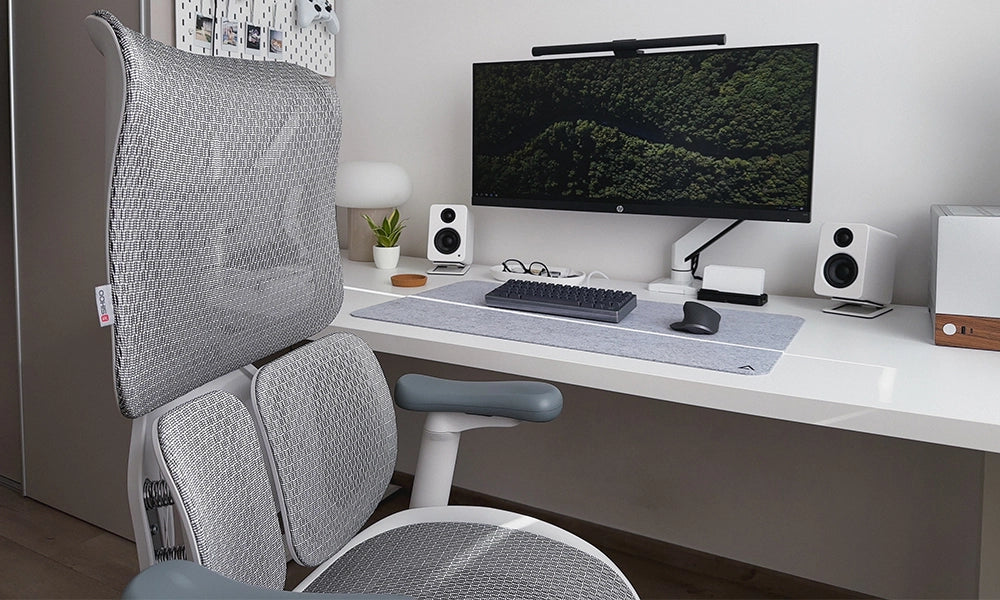An ergonomic office chair is not just a piece of furniture; it's a tool designed to support your body, enhance productivity, and promote long-term health. While there are plenty of ergonomic chairs available on the market, customizing your own can offer a tailored solution that perfectly fits your needs and preferences. In this comprehensive guide, we'll walk through the steps to create your very own ergonomic office chair.
Step 1: Understanding Ergonomics
Before diving into the construction process, it's crucial to grasp the principles of ergonomics. Ergonomic design aims to optimize human well-being and overall system performance by focusing on the interactions between humans and their environment or tools. When applied to an office chair, this means designing a chair that promotes natural posture, provides adequate support to the spine, and minimizes strain on muscles and joints during prolonged sitting.
Key ergonomic features to consider include:
- Adjustability: A good ergonomic chair should allow for adjustments in height, seat depth, armrest height, and lumbar support to accommodate different body types and preferences.
- Support: Proper lumbar support and a contoured seat shape that promotes even weight distribution are essential for maintaining spinal alignment.
- Materials: Choose breathable and durable materials for both the seat and backrest to ensure comfort and longevity.
Step 2: Planning Your Design
Designing your own ergonomic chair begins with a clear plan. Consider the following aspects:
- User Requirements: Assess your own needs and preferences. Do you need extra lumbar support? Are you taller or shorter than average? These factors will influence the chair's dimensions and features.
- Sketching the Design: Create rough sketches or use design software to visualize your chair. This helps in determining dimensions, angles, and the overall look of the chair.
- Research and Inspiration: Look at existing ergonomic chairs for inspiration. Note down features you like and those you want to improve upon.
Step 3: Gathering Materials and Tools
Once you have a solid design plan, gather the necessary materials and tools. Depending on your design, you may need:
- Wood or Metal Frame: Choose a sturdy material that can support weight and provide stability.
- Seat and Backrest Materials: High-quality foam padding and upholstery fabric for comfort and durability.
- Mechanisms and Adjustability Components: Gas lift mechanism, swivel base, casters, and adjustable armrests.
- Tools: Screwdrivers, wrenches, saw, drill, sewing kit (if upholstering), and measuring tape.
Step 4: Constructing the Frame
The frame serves as the foundation of your chair and determines its stability and structural integrity. Follow these general steps:
- Cutting and Assembly: Measure and cut your chosen material for the frame according to your design specifications. Assemble the frame using appropriate fasteners or adhesives.
- Reinforcement: Reinforce stress points and joints to ensure the chair can withstand regular use.
Step 5: Adding Ergonomic Features
With the frame in place, focus on integrating ergonomic features:
- Seat and Backrest: Attach foam padding to the seat and backrest, ensuring it conforms to the contours of the body.
- Lumbar Support: Integrate lumbar support using additional padding or a contoured backrest.
- Adjustability Mechanisms: Install the gas lift mechanism for height adjustment, swivel base for mobility, and adjustable armrests as per your design.
Step 6: Upholstering the Chair
Upholstering gives your chair its final look and enhances comfort. Here’s how to do it:
- Cutting and Sewing: Cut upholstery fabric to size, allowing extra for seams. Sew the fabric to fit snugly over the padding.
- Fitting and Fastening: Secure the upholstery to the frame using staples, nails, or screws. Ensure the fabric is taut and smooth.
Step 7: Testing and Adjustments
Once the chair is fully assembled, it's time for testing:
- Sit Test: Sit in the chair to test comfort, adjustability, and support.
- Make Adjustments: Fine-tune the chair’s settings to achieve optimal comfort and posture.
Step 8: Final Touches and Maintenance
Complete your ergonomic chair with any final touches, such as adding armrest covers or a headrest. Additionally, establish a maintenance routine to keep your chair in top condition.
Conclusion
Designing and building your own ergonomic office chair can be a rewarding project that results in a customized piece of furniture perfectly suited to your needs. By following these steps and paying attention to ergonomic principles, you can create a chair that not only enhances your workspace but also supports your health and well-being in the long run. Remember, the key to a truly ergonomic chair lies in its ability to promote natural posture, provide adequate support, and minimize strain — factors that are well worth the effort of a DIY project. So, roll up your sleeves, gather your materials, and embark on the journey to crafting your ideal ergonomic office chair today!



